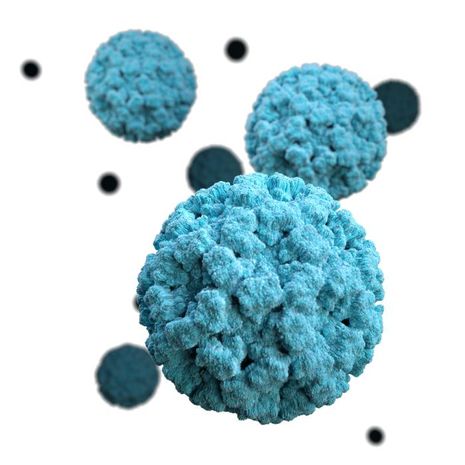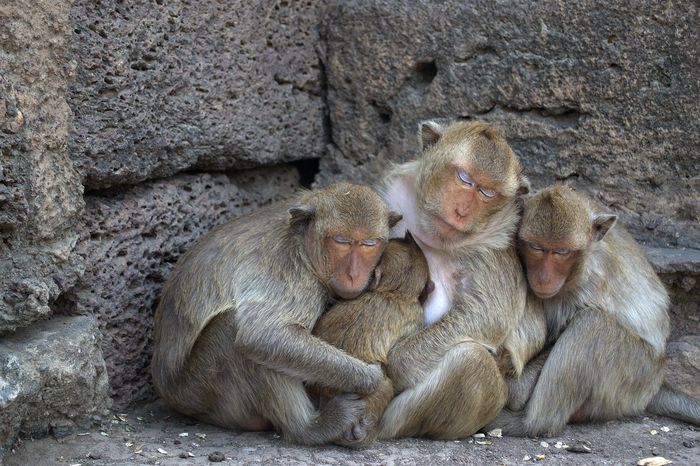What is Life? A Crash Course to Autopoiesis
From viruses to cognition, Natalia Zdorovtsova explains how defining life as systems of interactions can give new insight into its nature

This past year, we’ve heard a great deal of rhetoric that attempts to anthropomorphise SARS-CoV-2, the viral antecedent of COVID-19. This is best exemplified by PM Boris Johnson’s insistence that the virus is an “invisible enemy” to be defeated and a “common foe” to all of humanity. This comes with a clear political intention — to resurrect a certain wartime mentality within the British public — but also raises an interesting question relating to the nature of viruses. To what extent can they be personified? And, indeed, are they living?
The question of what exactly constitutes life — and how to distinguish between living and non-living things — is a big one. In the case of viruses, biologists have tended to make up their minds based on the fact that viral replication depends on a host organism. To those that rule out the aliveness of viruses based on this notion, living things must be defined by their ability to independently self-replicate.
"Autopoiesis, their answer to the question 'what is life?', challenges the notion that life and non-life form two entirely distinct, static groups."
But is that all there is to life? Surely not; although self-replication may be necessary to the perpetuation of life, it would be reductive to say that it sufficiently describes the complex and manifold processes that underlie the behaviour of organisms.
Biologists-turned-philosophers Humberto Maturana and Francisco Varela, in striving to systematically define life, were aware of the Procrustean reductionism inherent to this process of categorisation. Autopoiesis, their answer to the question “what is life?”, challenges the notion that life and non-life form two entirely distinct, static groups. Instead, Maturana and Varela emphasise the dynamic nature of life, using language which would later become key to the study of complex systems and emergence:
“Living systems are units of interactions; they exist in an ambience. From a purely biological point of view they cannot be understood independently of that part of the ambience with which they interact: the niche; nor can the niche be defined independently of the living system that specifies it.” – Humberto Maturana, “Autopoiesis and Cognition: The Realization of the Living” (1980).
Thus, living and non-living things are linked — they exist together and evolve together in a dynamic way. Life represents an evolutionary process from which “units of interactions” — organisms — emerge.
According to Maturana and Varela, something that is autopoietic, and therefore living, possesses the following qualities (as detailed in Fritjof Capra and Pier Luigi Luisi’s book “The Systems View of Life”):
- Self-maintenance: living things exist as bounded systems that regulate their own internal states. Aside from the incoming of nutrients from the environment and the expulsion of waste, living things autonomously maintain their own structural integrity.
- Nonlocalisation (and emergence): living things are not defined by their units; it is not our cells which make us alive, but rather, the properties that emerge from interactions between units at every level of our biological makeup (proteins, cells, organs, etc.).
- Interaction with the environment: living things take information from their environments and integrate it within the context of their own structural constraints.
Maturana and Varela’s definition of life has generated significant controversy since their landmark work, “Autopoiesis and Cognition: The Realization of the Living” was published four decades ago. Whether you agree with it or not, the application of autopoiesis to the classification of living things represents a radical shift in thinking — from reductionism to complexity, and from monism to holism. Beyond the specific details of their framework, Maturana and Varela challenge researchers and students from all disciplines to re-examine their assumptions about the nature of life. Namely, we are forced to consider life as a whole that is greater than the sum of its parts.
Maturana and Varela’s conception of autopoiesis was also integral to their developing the Santiago Theory of cognition, which emphasises that despite there being an interaction between organisms and their surroundings, living systems are autonomous: environments trigger structural changes, but they do not specify or direct them. According to the Santiago Theory, cognition is a process which emerges out of the interplay between organisms’ intrinsic biological structures and their use of information gained from their environmental contexts.
This idea has some far-reaching implications for the cognitive sciences. After all, we often think of “cognition” as being synonymous with “intelligence”. To redefine it according to the broader existence of biological processes, rather than exclusively by the activity of brain networks, would certainly be a stark departure from certain norms in our thinking.
The value of a theory is partially determined by whether or not it generates more interesting questions for scientists to explore. In that case, Maturana and Varela’s conception of life is highly valuable; it enriches scientific discourse and enables us to look at things from the perspective of interactive complexity. On the other hand, this theory has been criticised as an example of postmodernist thinking, lacking the predictive value and clear-cut descriptive norms that are considered sacrosanct within the sciences. Autopoiesis isn’t everyone’s cup of tea.
But let’s get back to what’s important. By Maturana and Varela’s standards, is the novel coronavirus a living thing? If it exhibits elements of autopoietic cognition, does that mean we can blame this “common foe” for all of our woes? These questions are left as an exercise to the reader.
Fortunately (or, perhaps, unfortunately) lockdown is as good a time as any to get into the philosophy of science!
 Comment / Plastic pubs: the problem with Cambridge alehouses 5 January 2026
Comment / Plastic pubs: the problem with Cambridge alehouses 5 January 2026 News / Cambridge businesses concerned infrastructure delays will hurt growth5 January 2026
News / Cambridge businesses concerned infrastructure delays will hurt growth5 January 2026 News / Cambridge academics stand out in King’s 2026 Honours List2 January 2026
News / Cambridge academics stand out in King’s 2026 Honours List2 January 2026 Interviews / You don’t need to peak at Cambridge, says Robin Harding31 December 2025
Interviews / You don’t need to peak at Cambridge, says Robin Harding31 December 2025 News / AstraZeneca sues for £32 million over faulty construction at Cambridge Campus31 December 2025
News / AstraZeneca sues for £32 million over faulty construction at Cambridge Campus31 December 2025










